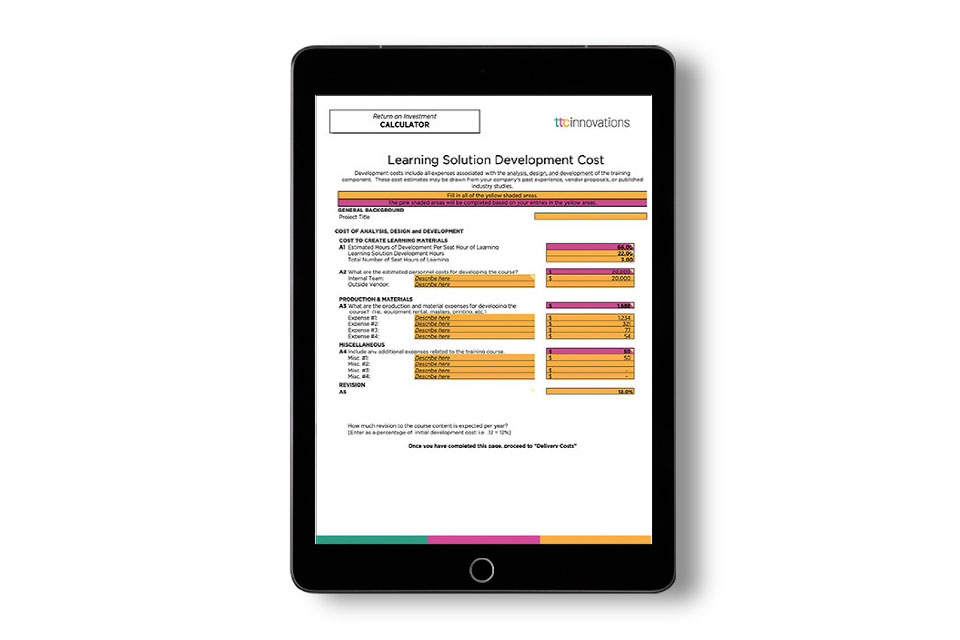With the aftereffects of the global pandemic and an ever-evolving digital revolution, organizations need to keep up with the latest trends and technologies to stay competitive. One way to do this is through a leader-led learning strategy. This approach focuses on empowering leaders to lead learning initiatives within their teams, promoting a culture of continuous learning, and improving organizational performance. In this blog, we will explore the six steps to develop a leader-led learning strategy in 2023.
1. Identify the learning needs of your organization.
When developing a leader-led learning strategy, it is key to get started on the right foot. The first step is to identify and assess the organization’s learning needs. This will help you understand what skills, knowledge, or behaviors need to be developed.
Identifying what needs to be learned can be done through surveys, focus groups, or interviews with employees, managers, and other stakeholders. Once you have identified the key areas of focus, you can begin to develop a plan to address them.
2. Determine appropriate learning methods.
The next step will be to determine the learning methods that are most appropriate for your organization and learning objectives.
People have different learning preferences, so it’s important to consider this when selecting a learning method. For example, some learners prefer to learn through hands-on activities, while others prefer to learn through reading and reflection. Consider providing a variety of learning methods to accommodate different learning styles. These may include:
- Classroom-based training
- Virtual instructor-led training
- E-learning
- On-the-job training
- Coaching
- Mentoring
- Or… a hybrid approach combining any of the above!
While it may not be feasible to accommodate every learning style individually, organizations can offer a mix of learning modalities to cater to a broader range of preferences. This could include a combination of instructor-led training, e-learning modules, videos, job aids, group activities, and discussions. By offering a variety of modalities, individuals can choose the approaches that align best with their learning style.
3. Identify and provide training for leaders.
An essential next step for the success of a leader-led learning strategy is to select leaders within your learning organization, who are willing and able to lead learning initiatives and provide training for these leaders to become effective facilitators of learning.
Look for leaders who are passionate about learning and development, have a growth mindset, and are open to new ideas and approaches. In some cases, it may be necessary to identify leaders who have subject matter expertise in the topic being taught. Here are a few benefits of training leaders to facilitate learning:
- They help build a culture of learning. This encourages continuous learning and development among all employees, which can lead to increased innovation, productivity, and job satisfaction.
- They can use their knowledge of the organization. Leaders who facilitate learning programs can tailor the content to meet the organization’s specific needs — making it relevant and impactful!
There are a variety of training programs, which can be offered to identified leaders. Here are some examples to consider:
- Facilitation Skills Training: This focuses on developing leaders’ facilitation skills, such as active listening, asking questions, managing group dynamics, and providing feedback. Facilitation skills training covers a range of facilitation techniques, tools, and best practices that can be applied in various learning contexts.
- Coaching Skills Training: Coaching is an important leadership skill that can be used to support learning and development. This training program focuses on developing leaders’ coaching skills, such as establishing rapport, asking powerful questions, providing feedback, and setting goals.
- Emotional Intelligence Training: Emotional intelligence is an important leadership skill that can be used to support learning and development. This focuses on developing leaders’ emotional intelligence, such as self-awareness, self-regulation, motivation, empathy, and social skills.
4. Develop learning content.
Next is to develop learning content that aligns with the identified learning needs of the organization. The content should be designed to meet specific learning objectives and should be engaging, relevant, and interactive. It should also be tailored to your audience.
Here are some examples of the different types of learning content that can be developed:
- E-learning modules: These are online courses that employees can access at any time and from any location. They can be designed to cover a wide range of topics, from technical skills to soft skills.
- Instructor-led training: This is classroom-style training that is delivered by an instructor. It can be used to cover complex topics that require interaction and discussion.
- On-the-job training: This is training that is delivered on the job, in the context of the employee’s daily work. It can be used to teach new skills and reinforce existing ones.
- Coaching and mentoring: These are one-on-one learning methods that focus on developing specific skills and providing feedback. They can be used to support employees in their personal and professional development.
Keep scrolling to learn more about some of the emerging trends and technologies that are shaping the future of L&D.
5. Create a system for tracking progress.
Tracking progress is a crucial component of any learning strategy because it allows organizations to evaluate the effectiveness of their training programs and make necessary adjustments. Here are some reasons why tracking progress is important:
- Measure the effectiveness of the learning strategy: By tracking progress, organizations can determine if their learning strategy is effective in meeting the desired outcomes. This information can help organizations to make informed decisions about future training programs.
- Identify areas for improvement: Tracking progress can help organizations identify areas where the learning strategy may not be effective. This can include issues with the training delivery, the content’s relevance, or the learners’ engagement.
- Evaluate the return on investment: By tracking progress, organizations can evaluate the return on investment of their training programs. This can help organizations to justify the resources spent on the training and make informed decisions about future training programs.
Examples of ways to track progress may include assessments, surveys, performance data, learning analytics, and observations. Or download our free Training ROI Calculator to calculate your learning and development ROI with ease!

FREE Download!
Download our FREE “Training ROI Calculator” and calculate your learning and development ROI with ease!
6. Encourage continuous learning.
Creating a culture of continuous learning is important for organizations to stay competitive and adapt to changing market trends and technologies. This is important because it helps to improve employee engagement, enhance employee retention and improve overall organizational performance. Here are some examples of ways to encourage continuous learning in an organization:
- Develop a learning culture: Encourage employees to take ownership of their learning by creating a culture that values continuous learning. This can be done by recognizing and rewarding employees who take initiative in their own development.
- Provide training opportunities: Provide employees with a variety of training opportunities, such as e-learning courses, instructor-led training, mentoring programs, and job shadowing.
- Encourage cross-functional collaboration: Encourage employees to work with colleagues from different departments or areas of expertise to learn new skills and gain different perspectives.
- Encourage informal learning: Encourage employees to engage in informal learning activities, such as attending conferences, participating in webinars, and reading industry publications.
In conclusion, a leader-led learning strategy can be a valuable asset for organizations looking to remain competitive in 2023. By assessing organizational learning needs, determining appropriate learning methods, selecting and training the right leaders, developing learning content, and tracking progress, organizations can successfully implement a leader-led learning strategy that benefits both employees and the business as a whole. This can be a game-changer for companies looking to cultivate a culture of continuous learning and improvement.






